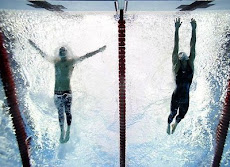As a response to a question we were posed on how to train muscles in the gym, do you train them all, all the time or not and how do rest days and recovery work?
It comes down to intensity. Intensity refers down to how much you are lifting and how many times you are lifting it. So basically it means how many reps and sets are you doing and how heavy are the weights? The higher the intensity of your work out the more time you will need to rest. So as an example if you are performing a strength and power training program, where you are lifting heavy weights and performing few reps for example doing 2-6 repetitions at 85-95% of your 1RM (1RM = one repetition maximum, the most you can lift in one push) then your intensity will be high and require a long period of rest between training days of the same muscle group. Equally if you are training for musclular endurance and performing 15-20 reps at a lower percentage of 1RM for example at 65% of your 1RM, a similar intensity will be achieved. Not to forget to also include the number of exercises you are performing per muscle group and how many sets you are performing of each exercise. So if you are performing only one exercise for the chest group using a strength training protocol (2-6 reps, 4 sets and more at 80-100% 1RM), your intensity will be far less than if you perform four exercises for the same muscle group.
So when training muscle groups, at high intensities, long periods of recovery are required and usually training a muscle group once per week is sufficient or up to twice a week at lower intensities to allow sufficient recovery time for the muscles to repair themselves.
Recovery of muscles involves the muscle repairing itself after damage due to overloading of the muscle fibres. DOMS (delayed onset muscle soreness) or commonly known as "being stiff" is a result not of the commonly thought of bad guy - lactic acid or lactate, whis has been shown to be removed within as little as an hour after exercise, but rather from actual structural damage of the muscle fibres and inflammation (the movement of certain cells such as white blood cells to the injured site to remove debris and initiate the healing process). So basically what happens in DOMS ("stiffness") is (Armstrong, 1984): high levels of tension in the muscles during training can result in actual structural damage to the muscle fibres and cell membranes. The resultant damage of cell membranes disturbs calcium homeostatsis (balance) which results in what is called necrosis or cell death which is at a peak after about 48 hours after the acute muscle damage. Then products of macrophage activity (macrophage - cell type from the immune system invade the injured area to remove debris and then invade again to aid in muscle regeneration) accumulate outside the damaged cells which stimulate free nerve endings (possible pain).
So recovery of muscle fibres can take days to repair themselves and sometimes even after the pain of DOMS subsides, it has been shown that muscles are still not fully reovered and not back to full strength. So firstly be aware of your damaged muscles and that if they are sore, they are not ready for exercise again, and that the harder you work the more recovery time you need until you train the same muscle group again and training a muscle group once a week is actually often beneficial as it allows the muscles to fully recover and for you to work it as hard again the next week and benefit from the strength and structural gains of the muscle.
JJ
Monday, February 22, 2010
Subscribe to:
Post Comments (Atom)




















No comments:
Post a Comment